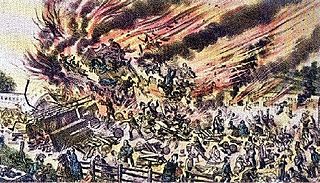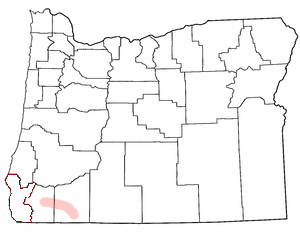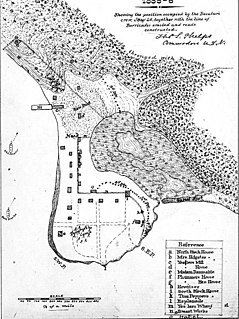 W
WThe 1856 Atlantic hurricane season featured six tropical cyclones, five of which made landfall. The first system, Hurricane One, was first observed in the Gulf of Mexico on August 9. The final storm, Hurricane Six, was last observed on September 22. These dates fall within the period with the most tropical cyclone activity in the Atlantic. Only two tropical cyclones during the season existed simultaneously. One of the cyclones has only a single known point in its track due to a sparsity of data. Operationally, another tropical cyclone was believed to have existed in the Wilmington, North Carolina area in September, but HURDAT – the official Atlantic hurricane database – excludes this system. Another tropical cyclone that existed over the Northeastern United States in mid-August was later added to HURDAT.
 W
WBleeding Kansas, Bloody Kansas, or the Border War was a series of violent civil confrontations in Kansas Territory, United States, between 1854 and 1859 which emerged from a political and ideological debate over the legality of slavery in the proposed state of Kansas. The conflict was characterized by years of electoral fraud, raids, assaults, and murders carried out in Kansas and neighboring Missouri by pro-slavery "Border Ruffians" and anti-slavery "Free-Staters". It was a one-state civil war, and has been called a Tragic Prelude, an overture, to the American Civil War which immediately followed it. About 200 people were killed.
 W
WThe Great Train Wreck of 1856 occurred in Whitemarsh Township, Pennsylvania, between Camp Hill station and Fort Washington station, on July 17, 1856. Two trains, traveling on the same track in converging directions, collided, killing between 59 and 67, and injuring over 100. The incident was referred to as The Camp Hill Disaster in Montgomery County, and The Picnic Train Tragedy in Philadelphia. It was the deadliest railroad catastrophe in the world up to that time and became one of the signature events of its era.
 W
WThe Know-Nothing Riots of 1856 occurred in Baltimore between September and November of that year. The Know-Nothing Party gained traction in Baltimore as native-born residents resented the growing immigrant population. Local street gangs became divided on political grounds, with the Know-Nothing affiliated gangs clashing with Democrat affiliated gangs. The partisans were involved in widespread violence at the polls and across Baltimore during municipal and national elections that year.
 W
WThe 1856 Last Island hurricane was one of the deadliest tropical cyclones recorded for Louisiana, and tied with Hurricane Laura in 2020 as the strongest hurricane to strike Louisiana in terms of wind speed. The first known tropical cyclone of the season, it was observed first as a minimal hurricane in the Gulf of Mexico near Dry Tortugas on August 9. Moving northwestward, the cyclone quickly intensified into a strong Category 4 hurricane on the modern-day Saffir–Simpson scale by the following day. Late on August 10, the hurricane made landfall on Last Island, Louisiana, with winds at 150 mph (240 km/h), hours before striking near New Iberia. The system rapidly weakened after moving inland, falling to tropical storm intensity on August 11. The storm would be last noted over Mississippi on the next day.
 W
WThe Niagara was a 245-foot (75 m) long sidewheel palace steamer launched in 1846. Like the others of its kind, it carried passengers and cargo around the North American Great Lakes. It was owned by the Collingwood Line.
 W
WThe Great Train Wreck of 1856 occurred in Whitemarsh Township, Pennsylvania, between Camp Hill station and Fort Washington station, on July 17, 1856. Two trains, traveling on the same track in converging directions, collided, killing between 59 and 67, and injuring over 100. The incident was referred to as The Camp Hill Disaster in Montgomery County, and The Picnic Train Tragedy in Philadelphia. It was the deadliest railroad catastrophe in the world up to that time and became one of the signature events of its era.
 W
WThe Rogue River Wars were an armed conflict in 1855–1856 between the U.S. Army, local militias and volunteers, and the Native American tribes commonly grouped under the designation of Rogue River Indians, in the Rogue River Valley area of what today is southern Oregon. The conflict designation usually includes only the hostilities that took place during 1855–1856, but there had been numerous previous skirmishes, as early as the 1830s, between European-American settlers and the Native Americans, over territory and resources.
 W
WThe Battle of Seattle was a January 26, 1856 attack by Native American tribesmen upon Seattle, Washington. At the time, Seattle was a settlement in the Washington Territory that had recently named itself after Chief Seattle (Sealth), a leader of the Suquamish and Duwamish peoples of central Puget Sound.
 W
WThe Yakima War (1855-1858) was a conflict between the United States and the Yakama, a Sahaptian-speaking people of the Northwest Plateau, then part of Washington Territory, and the tribal allies of each. It primarily took place in the southern interior of present-day Washington. Isolated battles in western Washington and the northern Inland Empire were sometimes separately referred to as the Puget Sound War and the Palouse War, respectively. This conflict is also referred to as the Yakima Native American War of 1855.